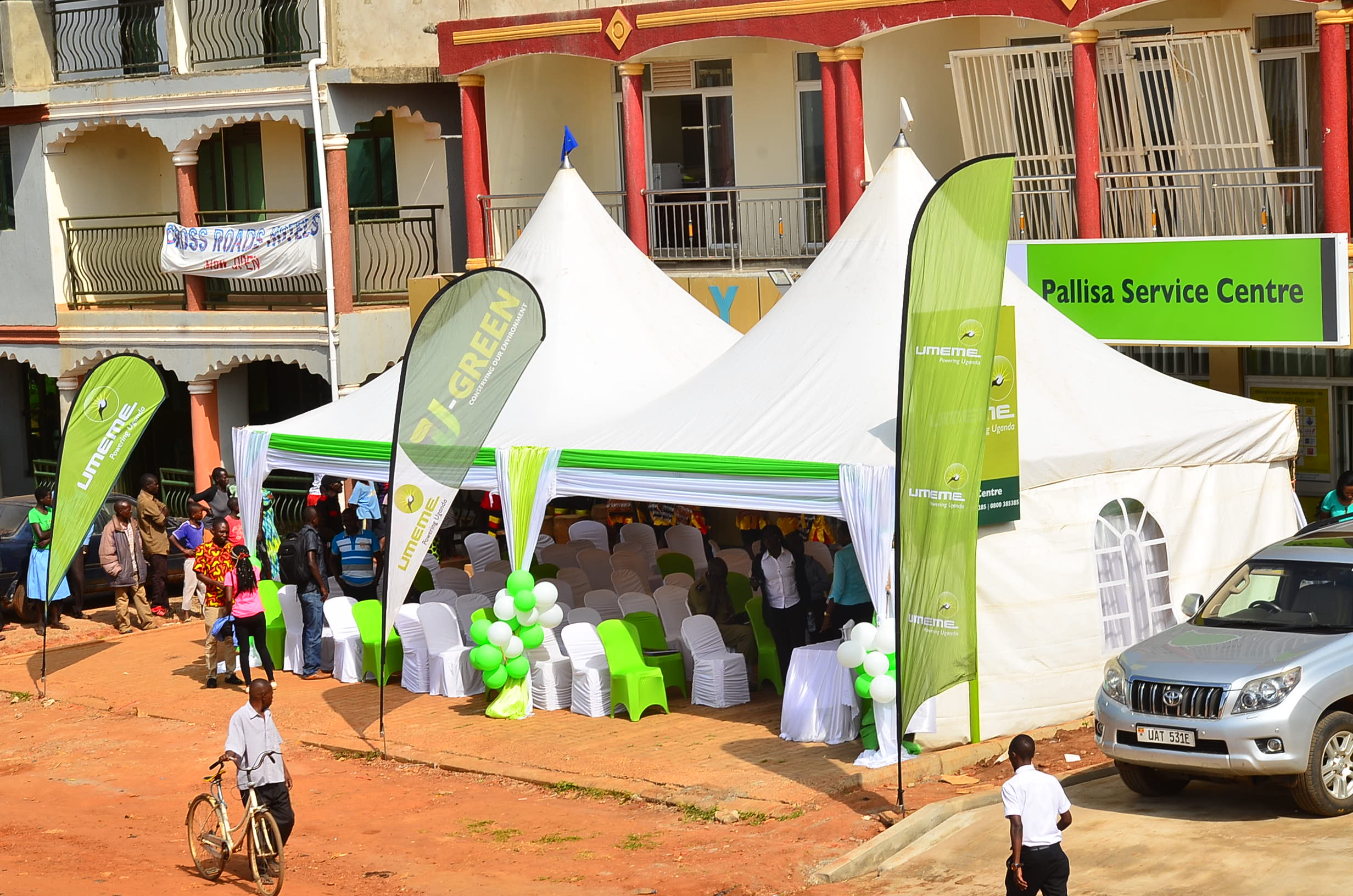In a bid to provide efficient, safe, reliable electricity and friendly customer experience, Umeme has today opened a new service centre in Pallisa town located on NYM Building on Outa Road.
“Our service strategy has always been focused on process simplification, automation and investments to improve network performance,” Mr. Selestino Babungi, the Umeme Managing Director, said.
He disclosed that more new services centres will be opened in Kapchorwa, Sironko, Bubulo and Kumi as part of the company’s grand plan to bring services closer to the customers.
The Umeme office in Mbale that has existed for 63 years has previously served 15 political districts, including Mbale Municipality, Pallisa, Budaka, Bulambuli, Bukedea, Kumi, Kapchorwa, Bubulo, Manafwaa and Sironko among others.
“We now have 38 service centres across the country, but some of them stretch over a radius of up to 80km, which makes it difficult for our customers to access some of the services. The opening up of several satellite offices will bridge this gap,” Babungi said.
He said the company will continue investing in network infrastructure in readiness for the new generation capacity from Isimba and Karuma dams.
Florence Nsubuga, the Umeme chief operations officer, encouraged the people of Pallisa to make the good use of the office as it will provide all the services that they were travelling to Mbale for.
“We are going to go out there and have engagements with the much of Pallisa’s 400,000 population to improve the 5% current household connectivity rate,” Nsubuga said. She said Umeme will intensify its efforts to increase access to 40% in 2040 from the current 23% in line with government’s infrastructure development and access agenda.

Paul Ssempira, the Mbale District Manager, said the service centre will help create a closer relationship with the over 3,000 current customers or 80,000 households that have been travelling 65 kilometres to Mbale to get services. He said the branch will also help in reducing the rampant power thefts in the area, boost collections, reduce losses and increase access through new connections.
Michael Okurut, the Pallisa LC5 Chairman, who was the chief guest, pledged maximum corporation to the giant utility as they start operations in the district. He also promised to help Umeme fight against the power theft menace in the district.
“Today is a historic day in the history of our district. I want to thank Umeme for responding positively to our call to bring services closer to the people. We are receiving this centre with open hands,” Okurut said.
Mrs Obed Collins, the Pallisa RDC, described the opening of the centre as the beginning of the transformation efforts of the district.
“We have been experiencing outages and it was too expensive travelling to Mbale to seek services, but thank God today, Umeme has brought light to Pallisa and neighbouring districts. Power is brings about transformation and I’m sure Pallisa will be transformed with the bringing closer of services to our people,” Collins said.
In 2017, Umeme rolled out customer outreach programmes in rural areas with the aim of bringing services closer to customers including education on dangers of power theft and vandalism, safe use of power, energy efficiency tips and e-payment options.
Mobile service desks were set up in high growth areas and potential customers proactively engaged to connect electricity to their homes.

Before these initiatives, illegal connections in the sub-region cost Umeme an estimate of sh20b annually.
In a move to avert the situation, the company launched operations against illegal power users in the area at the start of last year.
Paul Ssempira, the Umeme Mbale district manager, notes that there has been a 30% increase in the number of new connections to 8,431 in 2017 from 3,541 in 2016.
The region also contributed up to 10% of the 19% losses that the company registered at the end of 2016. However, partly due to the interventions, the company recorded lower energy loss of 17.2% in 2017.
“The region alone registered up to 60% energy losses in 2016, but this dropped to 45% in 2017. The 60% of the losses are categorised into 45% commercial losses (power theft) and 15% technical losses,” Ssempira adds.
The company’s losses in the region also dropped to sh15b in 2017 from sh20b after the utility intensified its operations against illegal users and vandals.












